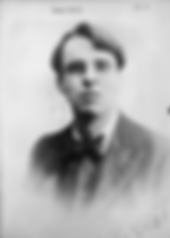Who Set It Best: "Down by the Salley Gardens" (William Butler Yeats)
- Kayla Collingwood
- Jun 9, 2023
- 2 min read

William Butler Yeats (1865-1939) was an Irish writer and (later in life) politician. He was a very important figure in 20th century literature (particularly poetry), and many of his poems have been set to music. He was heavily influenced by the work of other poets such as Keats, Wordsworth, and Blake, and his poetry was often inspired by his fascination with the supernatural and occult (he even collaborated with "spirit" writers on some works), symbolism/allusion, and the abstract. He wrote in a more "traditional" style than many of his contemporaries did, preferring to use standard forms rather than free verse.
The poem "Down by the Salley Gardens" was published as part of Yeats' first collection of poems: "The Wanderings of Oisin and Other Poems" (1889). Originally he called the poem "An Old Song Re-Sung", noting that this poem was "an attempt to reconstruct an old song from three lines imperfectly remembered by an old peasant woman in the village of Ballisodare, Sligo, who often sings them to herself". It is possible that the song was the ballad "The Rambling Boys of Pleasure", which contains some similar words and phrases.
What or where were the "Salley Gardens"? The word "salley" is a form of the word "sallow" - another name for a willow tree. It is possible that the "gardens" were near the Irish town of Sligo, on the banks of the river at Ballysadare. The trees here were cultivated as material for roof thatching.
Here is the poem in full. Read on for examples of how composers set it to music!
Down by the Salley Gardens
Down by the salley gardens my love and I did meet;
She passed the salley gardens with little snow-white feet.
She bid me take love easy, as the leaves grow on the tree;
But I, being young and foolish, with her would not agree.
In a field by the river my love and I did stand,
And on my leaning shoulder she laid her snow-white hand.
She bid me take life easy, as the grass grows on the weirs;
But I was young and foolish, and now am full of tears.
Discover the Sound Garden shop

Online products and courses for all ages
Settings

Listen to these different settings of the Yeats poem, and see how each composer used music to tell the story!
Herbert Hughes/Benjamin Britten - In 1909, Herbert Hughes used the melody of the traditional air (type of song) "The Maids of Mourne Shore". This become the most well-known melody, used by other composers and arrangers after Hughes. In 1943, Benjamin Britten used this text/tune combo for one of his Folk Song settings, and his setting has become popular in its own right.
John Ireland
Rebecca Clarke
Ivor Gurney
Special Mention
This version uses the Hughes melody, sung in a non-classical Irish folk song style

